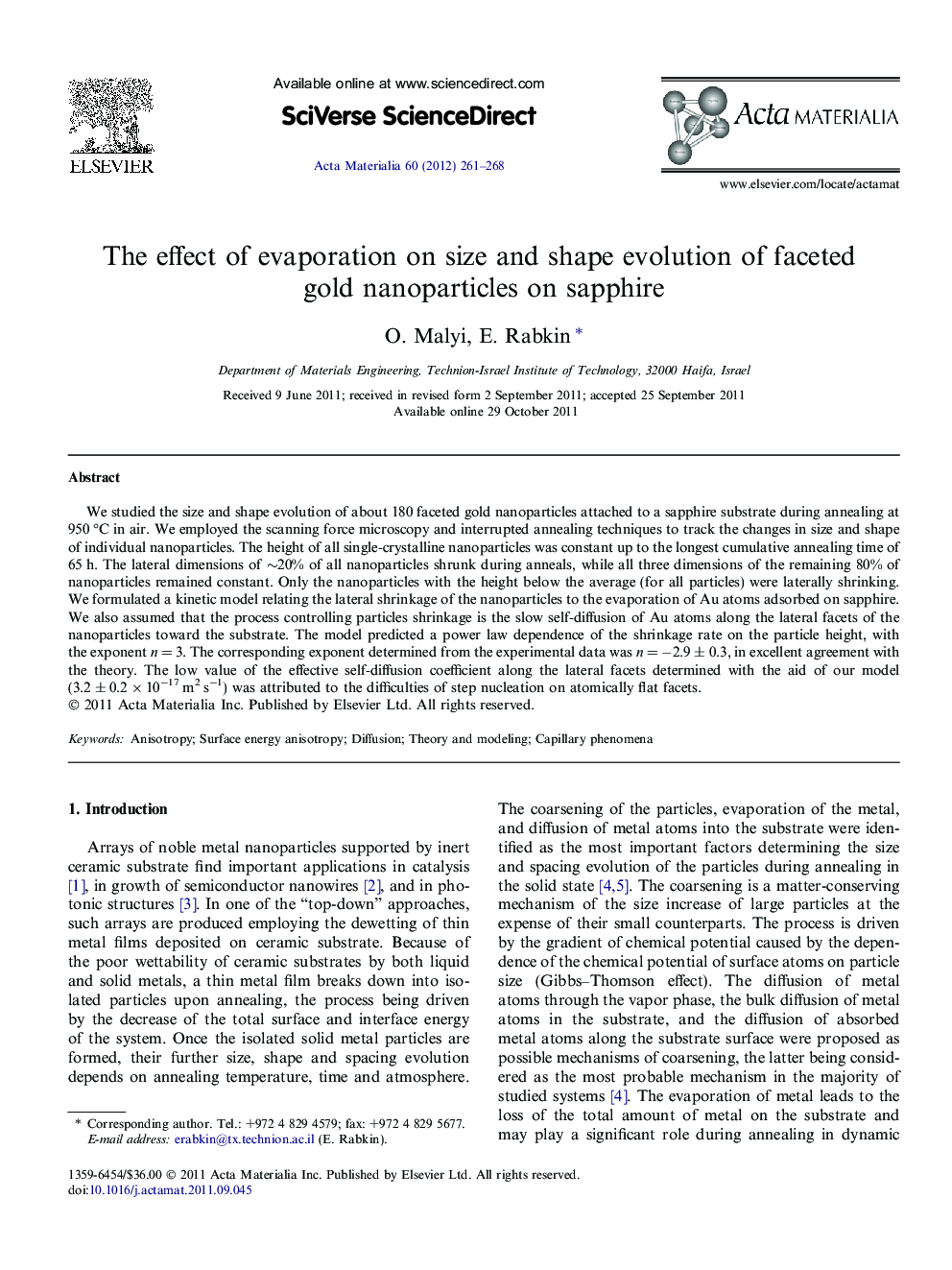| Article ID | Journal | Published Year | Pages | File Type |
|---|---|---|---|---|
| 1446983 | Acta Materialia | 2012 | 8 Pages |
We studied the size and shape evolution of about 180 faceted gold nanoparticles attached to a sapphire substrate during annealing at 950 °C in air. We employed the scanning force microscopy and interrupted annealing techniques to track the changes in size and shape of individual nanoparticles. The height of all single-crystalline nanoparticles was constant up to the longest cumulative annealing time of 65 h. The lateral dimensions of ∼20% of all nanoparticles shrunk during anneals, while all three dimensions of the remaining 80% of nanoparticles remained constant. Only the nanoparticles with the height below the average (for all particles) were laterally shrinking. We formulated a kinetic model relating the lateral shrinkage of the nanoparticles to the evaporation of Au atoms adsorbed on sapphire. We also assumed that the process controlling particles shrinkage is the slow self-diffusion of Au atoms along the lateral facets of the nanoparticles toward the substrate. The model predicted a power law dependence of the shrinkage rate on the particle height, with the exponent n = 3. The corresponding exponent determined from the experimental data was n = −2.9 ± 0.3, in excellent agreement with the theory. The low value of the effective self-diffusion coefficient along the lateral facets determined with the aid of our model (3.2 ± 0.2 × 10−17 m2 s−1) was attributed to the difficulties of step nucleation on atomically flat facets.
